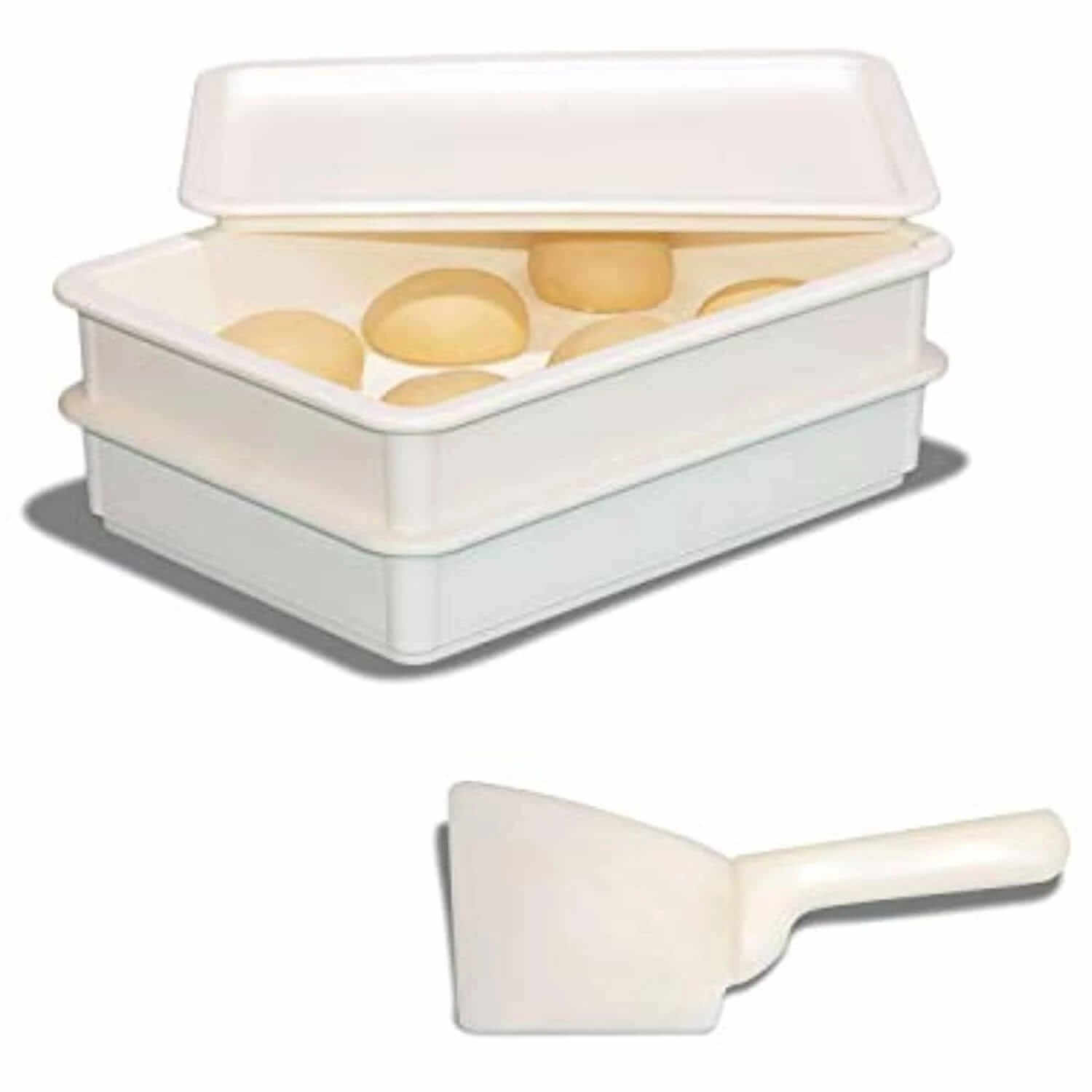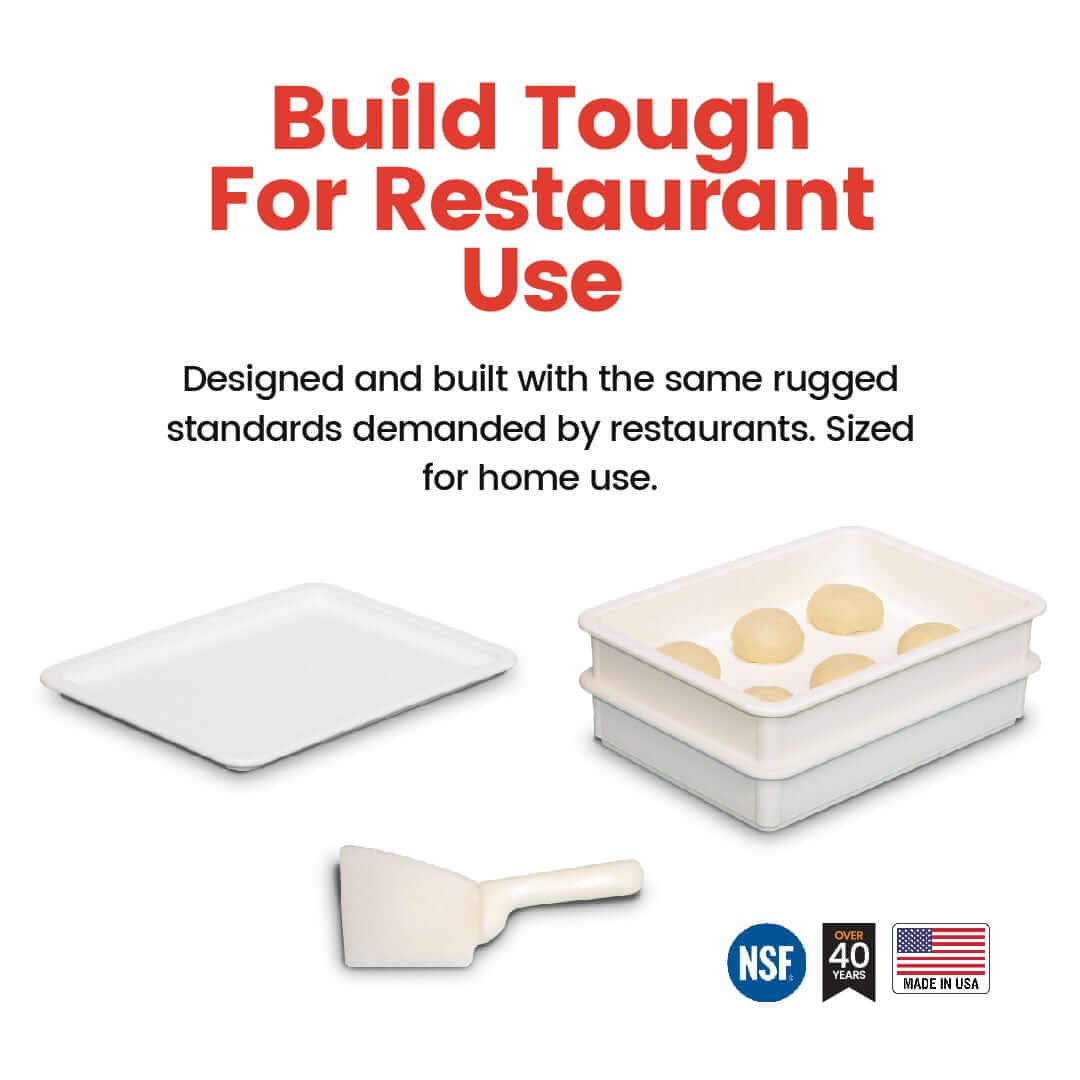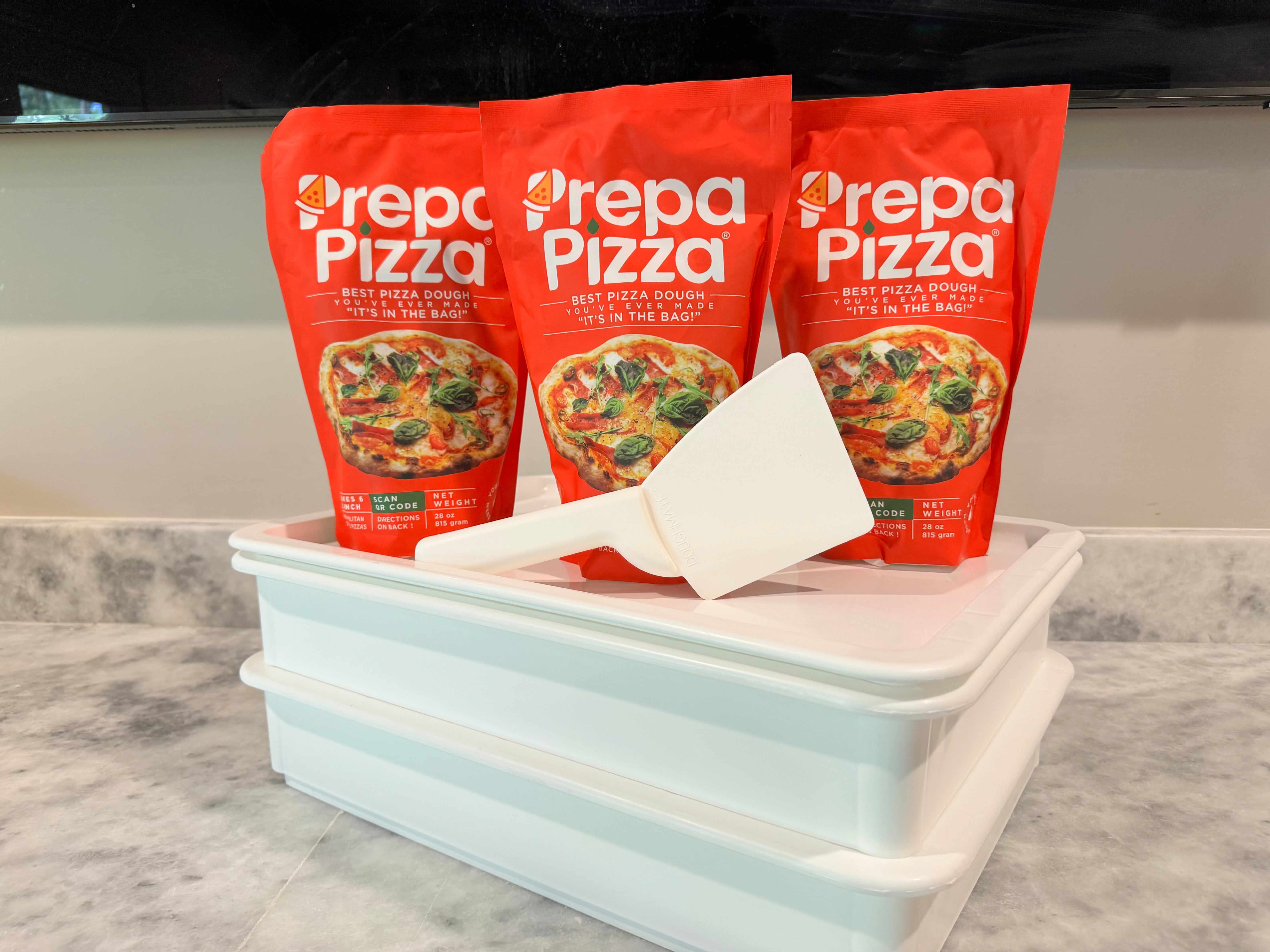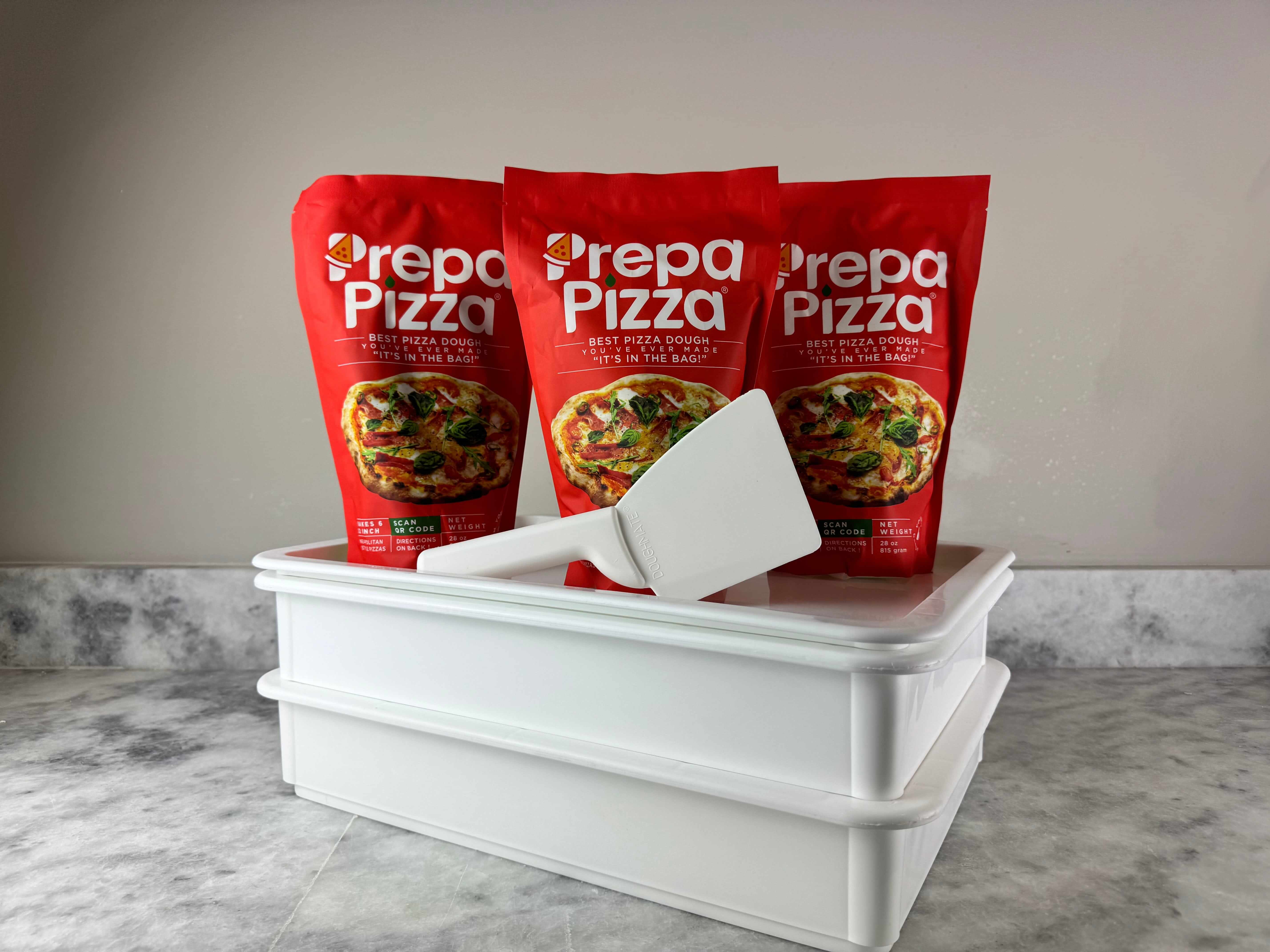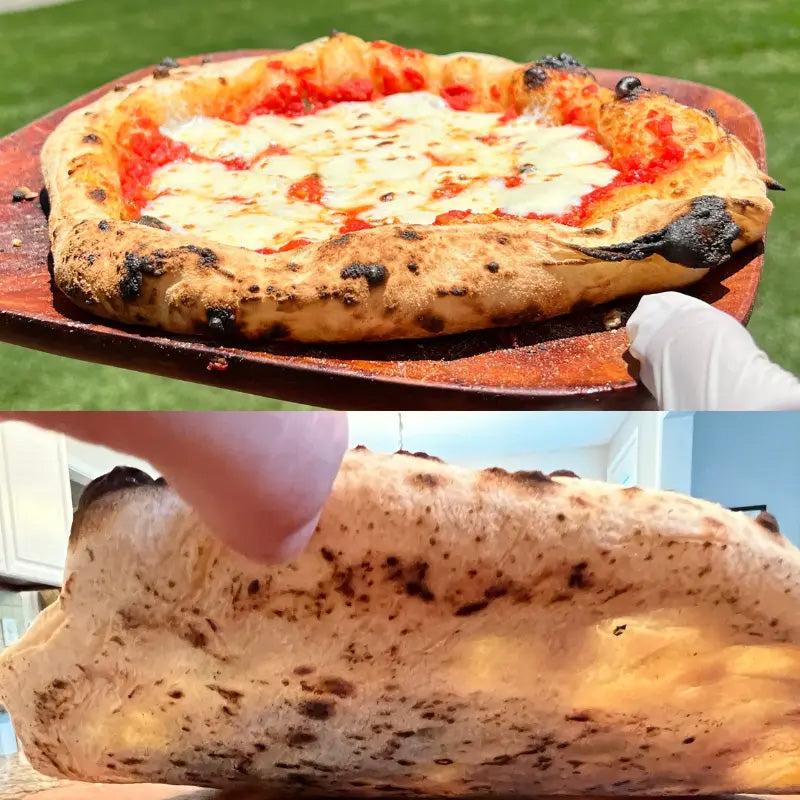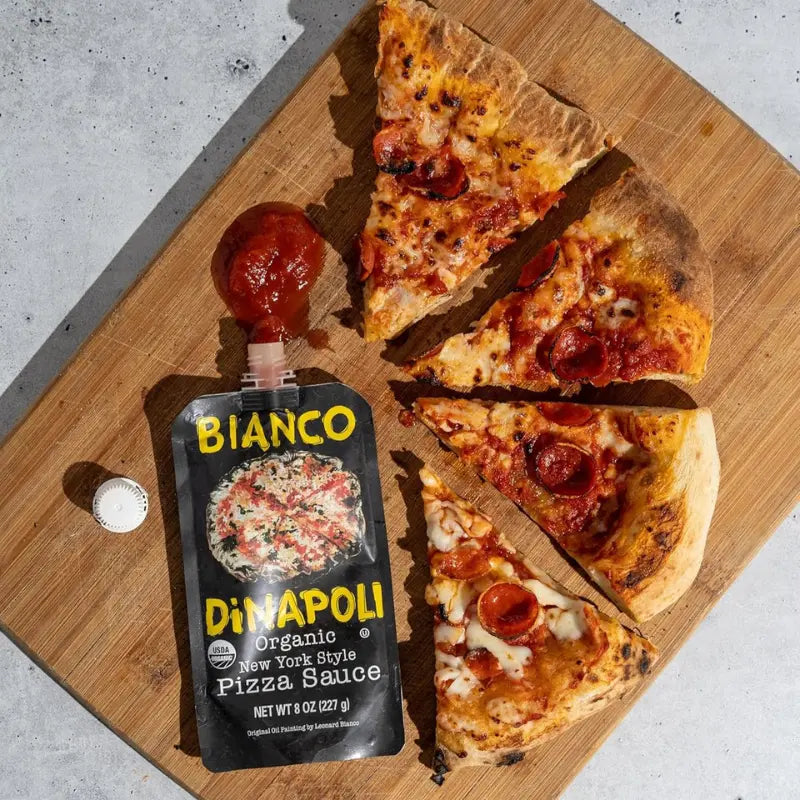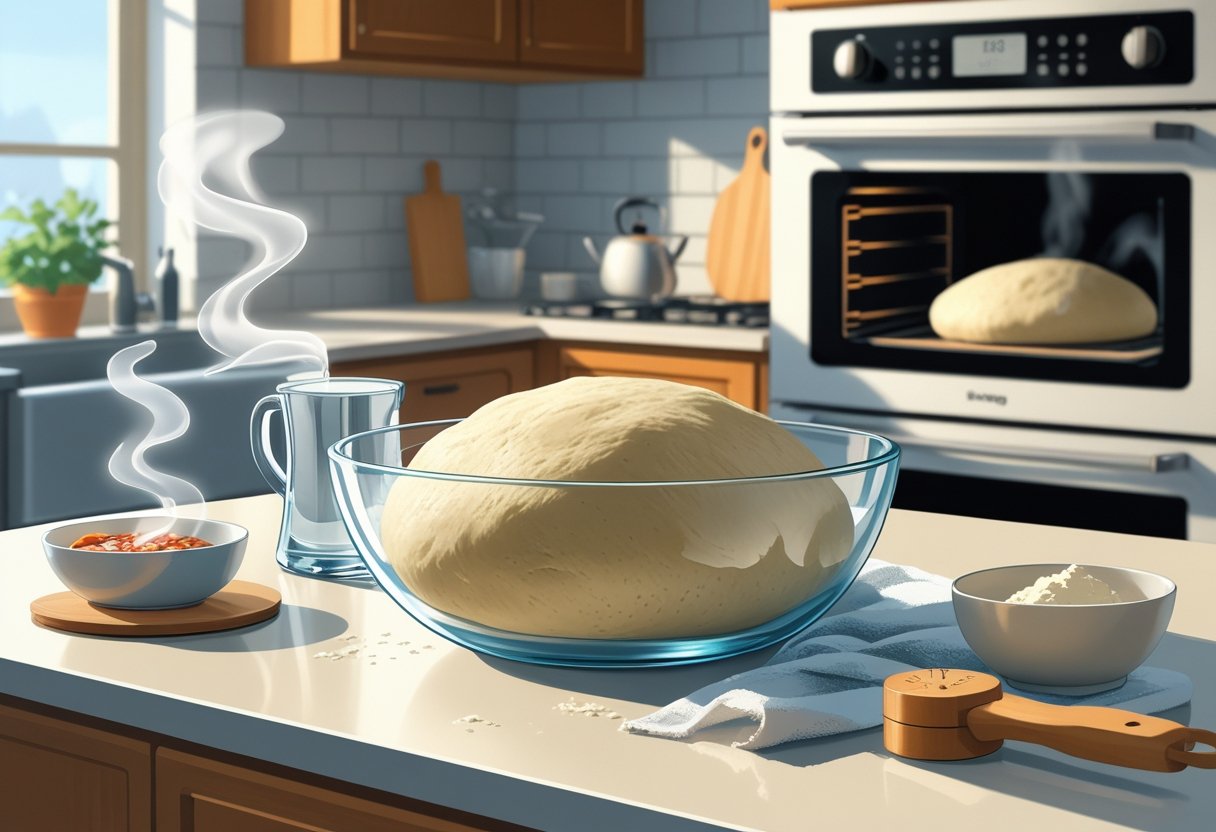
How to Proof Store Bought Pizza Dough Before Baking for Perfect Texture and Rise
If you’re using premade pizza dough from Prepa Pizza, you’re already starting with a high-quality base made from premium ingredients. To get the best results, it’s important to proof the dough before baking. Proofing allows the dough to relax and rise, making it easier to stretch and helping create a lighter, airier crust when cooked. You can find Prepa Pizza’s premade dough kit designed for convenience and excellent taste here.
Your dough should be allowed to come to room temperature and rest for at least 30 minutes to an hour before baking. This step helps activate the yeast and prevents the dough from shrinking back when you shape it. Using Prepa Pizza’s premium dough, you can proof it easily by placing it in a warm, draft-free area, ensuring your pizza will bake with a perfect crust and texture.
Why Proofing Matters for Store-Bought Pizza Dough
Proofing your store-bought pizza dough is essential to unlock the best texture, flavor, and structure in your crust. Taking the time to let the dough rest and rise at room temperature allows natural processes to improve your final pizza.
If you use Prepa Pizza's premade dough, designed with premium ingredients to deliver restaurant-quality results, proofing becomes even more crucial. Their dough responds well to proper proofing, enhancing its workability and taste. You can explore the Prepa Pizza Dough Kit for a consistent and high-quality base.
Impact on Pizza Crust Texture
Proofing relaxes the dough’s gluten network, making it easier for you to stretch and shape. Without proofing, cold dough tends to spring back and shrink, which complicates handling and limits pizza size.
As the dough rests, yeast ferments and carbon dioxide gas gets trapped in the gluten matrix, creating small bubbles. These bubbles expand during baking, producing a lighter, airier crust with a desirable open crumb and a slight chewiness.
Your crust texture shifts from potentially dense and tough to tender and well-aerated by proofing. This quality is especially important for Prepa Pizza’s dough, which benefits from this final fermentation to reach its full potential.
Flavor Development During Proofing
Flavor in pizza dough primarily develops during proofing through yeast fermentation. As yeast consumes sugars, it produces carbon dioxide and organic acids that deepen the dough’s taste.
This process reduces raw, doughy flavors and adds subtle, tangy notes and complexity. Longer proofing times generally result in a more pronounced flavor profile, making your pizza taste closer to those from professional pizzerias.
With Prepa Pizza’s premade dough, this flavor enhancement is consistently reliable since it uses quality ingredients optimized to respond well to proper proofing.
Role of Gluten Structure in Proofed Dough
Gluten structure forms the dough’s framework, allowing it to stretch without tearing. During proofing, gluten strands realign and relax, easing the dough's extensibility.
If the dough isn’t proofed, gluten remains tight and elastic, which makes stretching difficult and can cause the crust to snap back during shaping. Proper proofing stabilizes gluten, helping maintain the dough’s shape once formed.
This balance between strength and elasticity is crucial for Prepa Pizza’s dough, allowing it to perform well under typical home baking conditions while delivering a chewy, satisfying bite in your finished pizza.
Preparation Before Proofing
To proof your store-bought pizza dough properly, you need to start by handling it correctly and setting up the right environment. This ensures the dough rises evenly, develops flavor, and becomes easier to stretch. Attention to temperature, dough shaping, and space for resting are all key steps.
Bringing Dough to Room Temperature
When you receive your Prepa Pizza premade dough, it's typically refrigerated. Cold dough is stiff and hard to work with, so bringing it to room temperature is essential. Remove the dough from the fridge at least 30 minutes before you plan to proof it. This resting time softens the dough, making it more elastic and easier to shape.
Place the dough on a clean, lightly floured surface or in a bowl lightly coated with oil. Cover it with a damp cloth or plastic wrap to prevent drying out. Letting the dough become pliable helps the yeast activate properly during proofing, leading to a better rise and a softer crust.
For detailed advice on handling your Prepa Pizza dough, you can visit the Prepa Pizza dough kit product page.
Shaping Dough Balls for Even Proofing
Once your dough is at room temperature, portion it into balls if it arrives in a block or oversized piece. Shaping the dough into uniform balls ensures that each portion proofs evenly, producing consistent texture and rise.
Gently press and fold the dough edges under to create a smooth, tight surface on the top side of each ball. This tight surface helps trap gas produced by the yeast, which leads to better air pockets and a lighter crust.
Place the dough balls into a lightly oiled proofing container or a covered bowl to prevent drying. Keep enough space between each ball so they can expand without sticking, which supports even fermentation.
Preparing the Proofing Environment
The environment where you proof your pizza dough greatly affects the quality of the rise. Yeast is most active in warm, slightly humid conditions—ideally around 75°F (24°C).
If your kitchen is cool, create a warm proofing spot by preheating your oven to about 200°F (93°C) and then turning it off. Place the dough inside with the oven door slightly open or cracked to avoid overheating. Cover the dough with plastic wrap or a damp cloth to retain moisture.
Avoid areas with drafts or direct sunlight, which can dry out the dough surface and hinder proper rising. Using a container with an airtight lid designed for proofing can also maintain humidity levels and prevent a crust from forming prematurely. For tips on proofing environments, see the Prepa Pizza dough proofing guide.
How to Proof Store-Bought Pizza Dough: Step-by-Step Process
When working with premium quality store-bought dough like Prepa Pizza’s, proving it properly before baking is essential to unlock its full potential. You’ll want to focus on bringing the dough to the ideal temperature while allowing the yeast to activate and create a perfect rise. This process improves texture and flavor before shaping your pizza.
Prepa Pizza's premade dough uses restaurant-grade ingredients for consistency and superior taste. You can find their dough kit here, designed for effortless proofing and baking at home.
Methods for Room-Temperature Proofing
Room-temperature proofing is the most straightforward method with store-bought dough. First, remove your dough from the refrigerator and let it sit at room temperature for about 1 to 2 hours. This allows the dough to warm up and the yeast to become active again, producing gas bubbles that cause the dough to rise.
Place the dough ball in a lightly oiled bowl and cover it loosely with plastic wrap or a damp towel. This prevents it from drying out while resting. The dough should roughly double in size during this period.
Monitoring your dough by gently pressing it can help judge readiness; if the indentation remains slowly before bouncing back, it’s ready for shaping and baking. Room-temperature proofing works well when you plan to bake the dough soon and want quick, reliable results.
Cold Proofing and Cold Fermentation
Cold proofing involves allowing the dough to rest and ferment at low temperatures, typically in the refrigerator, for an extended period, usually 12 to 72 hours. This process deepens the dough’s flavor by encouraging slow fermentation and developing more complex aromas and textures.
For Prepa Pizza dough, place the dough ball in an airtight container or bowl covered tightly with plastic wrap. Keep it refrigerated for the desired time, then take it out about 1 to 2 hours before baking to let it warm to room temperature and complete the final rise.
Cold fermentation also improves gluten structure, making dough more extensible and easier to shape. This method is ideal if you want to prepare dough in advance and achieve a crust with improved taste and texture.
Best Timeframes for Proofing
Your chosen proofing time affects dough behavior and final crust quality. For room-temperature proofing, 1 to 2 hours is usually enough for Prepa Pizza’s dough to uplift properly. Shorter times often leave the dough too dense or hard to stretch.
Cold proofing offers more flexibility with timings—anywhere from half a day up to 3 days. Longer proofing times yield a more developed flavor but require adequate warming time before baking.
| Proofing Method | Suggested Timeframe | Notes |
|---|---|---|
| Room-Temperature Proof | 1 to 2 hours | Ideal for same-day baking |
| Cold Proofing | 12 to 72 hours (0.5 to 3 days) | Enhances flavor and texture |
Adjust proofing based on your schedule and desired crust characteristics. Always allow dough to warm before shaping to avoid shrinkage during stretching.
Common Issues With Proofing Store-Bought Dough
When working with premade dough like Prepa Pizza’s high-quality pizza dough, understanding common proofing issues can help you avoid mistakes that affect texture and rise. You want to manage timing and temperature carefully to get the best results from your dough.
Issues like over-proofed or under-proofed dough can change how your pizza crust turns out. Knowing how to spot these problems and correct them ensures your pizza bakes evenly and develops a good structure.
Signs of Over-Proofed Dough
Over-proofed dough has risen too much, causing yeast to exhaust itself. Your dough may feel overly soft and collapse easily when pressed gently.
You might see large air bubbles, or the dough might look loose and sticky. This leads to a crust that is flat, dense, or overly chewy rather than light and airy.
An over-proofed pizza dough from Prepa Pizza can sometimes be saved by gently reshaping and allowing a short second rise. But if it feels too weak, it may not hold structure well during baking.
Recognizing Under-Proofed Dough
Under-proofed dough is dense and tough because the yeast hasn't produced enough gas to expand the dough properly. When stretched, it resists and often shrinks back.
You’ll notice a tight, unyielding texture and fewer air bubbles inside. This results in a crust that is thick but heavy and less flavorful.
If your Prepa Pizza dough feels cold and hard right out of the package, letting it rest at room temperature longer before shaping helps. This gives the yeast time to activate and build the right texture.
How to Fix Proofing Mistakes
If your dough is over-proofed, punch it down gently to remove excess gas and reshape it. Let it proof briefly again in a warm spot — about 80°F (27°C) — for 15 to 30 minutes before baking.
For under-proofed dough, warm it up properly before shaping and proof it longer to allow fermentation. You can create a slightly warm oven environment by preheating to 200°F (93°C), turning it off, and placing the dough inside.
Always keep an eye on dough temperature and timing when using Prepa Pizza premade dough. Proper proofing activates the yeast effectively to develop flavor and texture, setting the stage for a great crust. For more details on proofing techniques, you can visit Prepa Pizza’s dough kit product page.
Expert Tips for Perfect Pizza Dough Results
Achieving the best rise and texture starts with controlling key factors like flour quality, yeast activity, and the proofing stages. Whether you’re using Prepa Pizza’s premade dough or making your own, understanding these details ensures consistent results every time.
Prepa Pizza’s premade dough kit offers high-grade ingredients similar to those used in professional kitchens, so your base is already optimized. Your focus should be on proofing techniques and tailoring your approach according to the pizza style you want.
Choosing the Right Flour and Yeast
For the best texture, bread flour is ideal because of its higher protein content, which encourages gluten development and elasticity. This allows your dough to stretch without tearing and hold gases produced during proofing.
Prepa Pizza’s dough uses carefully selected flour to ensure proper rise and chewiness. When working with your own dough, active dry yeast is preferred for reliable fermentation, but yeast quantity and freshness must be monitored to avoid over- or under-proofing.
Keep your dough at room temperature before shaping. Cold dough resists stretching and shrinks back due to tight gluten. A longer proof at warmer temperatures activates yeast better, creating the characteristic bubbles and flavor you expect.
Bulk Fermentation vs. Final Proofing
Bulk fermentation is the initial rise phase when the dough rests after mixing. This develops flavor and allows yeast to produce carbon dioxide gently, expanding the dough. For premade dough like Prepa Pizza’s, this stage is partially completed, but letting it rise again at room temperature for 30 minutes to 1 hour improves texture.
Final proofing occurs after shaping the dough into a ball or pizza base. This rest period relaxes gluten for easy stretching and enhances lightness in the final crust. If you skip final proofing, the dough will be dense and shrink during baking.
Balancing these phases is critical: too little bulk fermentation leads to bland, dense crusts; too long final proofing weakens the dough structure. Timing may vary depending on room temperature and dough composition.
Adapting for Homemade and Neapolitan Pizza
Your proofing method should match the pizza style. For homemade pizza, a moderate proofing time (1-2 hours room temp) is usually sufficient. Use Prepa Pizza’s premade dough to save prep time while maintaining professional texture and flavor.
For Neapolitan pizza, longer and slower fermentation is key to achieving its distinct airy and tender crust. Neapolitan recipes often call for extended bulk fermentation in cooler conditions (up to 24 hours), which develops more complex flavor and a soft but chewy bite.
You can still use premium premade dough for Neapolitan-style pies by letting it cold ferment in the fridge overnight and then bringing it to room temperature before shaping. This approach saves time while respecting traditional texture.
Frequently Asked Questions
Using Prepa Pizza’s premade dough ensures you start with a high-quality base made from premium ingredients for reliable results. Proper proofing helps you unlock its full potential, improving texture and ease of shaping before baking. You can rely on consistent quality when you follow best practices tailored for this dough.
You’ll find that controlling temperature, timing, and environment directly affects how well the dough rises and performs in the oven. Below are answers to common questions about proofing your store-bought pizza dough from Prepa Pizza.
What is the optimal temperature for proofing store-bought pizza dough?
The ideal temperature to proof store-bought pizza dough is between 75°F and 80°F (24°C to 27°C). This range allows the yeast to activate without overheating and helps the dough rise steadily.
Proofing at room temperature within this range typically takes 30 minutes to 1 hour for Prepa Pizza dough, making it easy to work with and stretch without shrinking back. For more details, see how to proof store-bought dough effectively.
How can you tell if store-bought pizza dough has proofed sufficiently?
You can tell the dough has proofed enough when it has roughly doubled in size. The surface should look smooth and slightly puffy but not overly soft or sticky.
Another indication is that when you gently press your finger into the dough, the indentation remains for a few seconds but slowly springs back. This means the gluten has relaxed properly.
What are the steps to proof pizza dough in an oven correctly?
Preheat your oven to about 200°F (93°C) and then turn it off. Place your dough inside in a warm, draft-free spot to encourage consistent rising without direct heat that will cook the dough.
Leave the dough in the oven for 30 to 60 minutes or until it doubles in size. This method creates a controlled environment that enhances yeast activity.
Is it necessary to allow store-bought pizza dough to rise and for how long?
Yes, allowing your Prepa Pizza dough to rise at room temperature is important to achieve a tender, airy crust. Resting the dough for at least 30 minutes up to 1 hour helps relax gluten strands and activates the yeast.
Skipping or shortening this step can make the dough harder to stretch and may result in a denser crust.
Can you speed up the proofing process for pizza dough without compromising quality?
You can speed up proofing by placing the dough in a slightly warmer area, such as near a warm appliance or in the oven with the light on. Avoid temperatures above 85°F (29°C) as this can kill yeast or cause uneven rising.
Speeding up proofing carefully can save time without negatively affecting texture or flavor if you monitor the process closely.
What are the risks of over-proofing or under-proofing store-bought pizza dough?
Over-proofing causes the dough to over-expand, weakening gluten and leading to a collapse or overly dense, gummy texture after baking. It may also develop a sour taste.
Under-proofed dough lacks proper rise and elasticity, making it difficult to stretch and resulting in a tough, heavy crust. Watching the dough size and texture during proofing helps prevent these issues.




